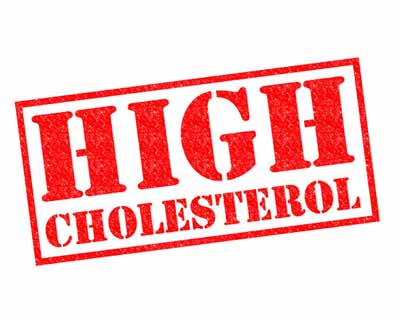- Home
- Editorial
- News
- Practice Guidelines
- Anesthesiology Guidelines
- Cancer Guidelines
- Cardiac Sciences Guidelines
- Critical Care Guidelines
- Dentistry Guidelines
- Dermatology Guidelines
- Diabetes and Endo Guidelines
- Diagnostics Guidelines
- ENT Guidelines
- Featured Practice Guidelines
- Gastroenterology Guidelines
- Geriatrics Guidelines
- Medicine Guidelines
- Nephrology Guidelines
- Neurosciences Guidelines
- Obs and Gynae Guidelines
- Ophthalmology Guidelines
- Orthopaedics Guidelines
- Paediatrics Guidelines
- Psychiatry Guidelines
- Pulmonology Guidelines
- Radiology Guidelines
- Surgery Guidelines
- Urology Guidelines
New testing method allows more effective diagnosis of genetically based high cholesterol

A new genetic testing method developed at Western University called LipidSeq can identify a genetic basis for high-cholesterol in almost 70 per cent of a targeted patient population. Using next-generation sequencing (NGS) technology, researchers were able to pinpoint specific areas of a person's DNA to more effectively diagnose genetic forms of high-cholesterol, which markedly increase risk for heart attack and stroke.
Dr. Rob Hegele, a Distinguished University Professor at Western University's Schulich School of Medicine & Dentistry and a scientist at Robarts Research Institute says this new method provides a more cost-effective way to find these genetic links rather than sequencing the entire genome. By pre-identifying patients who have a personal and familial history of high-cholesterol, LipidSeq was able to find a genetic mutation in 67 per cent of those tested.
"Previous studies showed little yield in doing genetic testing," said Hegele, who is also an endocrinologist at London Health Sciences Centre, a Lawson Health Research Institute scientist and a world-leading expert in lipid metabolism disorders. "This new method shows there is a benefit, especially when you can add the extra step of medically selecting those with a familial history of the disease."
The study, published online in the journal Arteriosclerosis, Thrombosis, and Vascular Biology, used the LipidSeq method on 313 patients with LDL cholesterol levels above 5.0 mmol/L who had been referred to the lipid clinic at LHSC. From those patients, LipidSeq was able to identify a genetic mutation in 67 per cent. Fifty-four per cent were single gene mutations, and the other 13 per cent were polygenic DNA variants, meaning they were a combination of multiple bad genes inherited together. The study also showed that the percentage of individuals with an identified genetic component increased as cholesterol levels in the patient increased.
LipidSeq has already been licensed for use in the U.S. to help clinicians identify patients with genetically-based high-cholesterol in order to guide drug prescriptions. Hegele says that while statins, a typically prescribed class of drugs for high cholesterol, work well in the majority of the population, they don't bring cholesterol down to target levels in those with severe genetic-forms of the disease. A new class of biologic drugs came onto the market in Canada last year, and while more effective for treating high-cholesterol, they are also more expensive.

Disclaimer: This site is primarily intended for healthcare professionals. Any content/information on this website does not replace the advice of medical and/or health professionals and should not be construed as medical/diagnostic advice/endorsement or prescription. Use of this site is subject to our terms of use, privacy policy, advertisement policy. © 2020 Minerva Medical Treatment Pvt Ltd